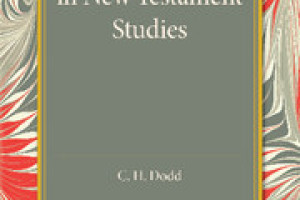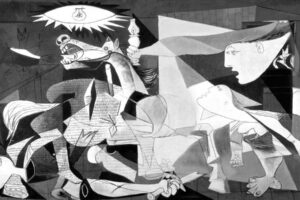Questions concerning the New Testament’s relationship to aspects of the Roman Empire—and in particular the political claims of Caesar as “lord” and the religious worship of the Roman rulers in the imperial cult—have been at the forefront of much recent scholarship within the New Testament guild. Opinions differ as to the extent to which such issues are reflected broadly in the New Testament and more specifically in the Pauline corpus. Some suggest that Paul openly and explicitly critiques the Roman Empire while others reject any imperial influence. Still others have suggested a mediating position where Paul uses the subtext of his letters to engage in a veiled critique against the empire, which would protect him against any persecution that may result from more explicit critiques of the empire. While this mediating position has offered new avenues of inquiry into the relationship between Paul and Rome, there have been serious questions raised about the methodological approach of such studies. How can modern scholars objectively identify and analyze veiled critiques that were intentionally meant to be hidden from outside readers?
Christoph Heilig’s Hidden Criticism?: The Methodology and Plausibility of the Search for a Counter-Imperial Subtext in Paul addresses this situation, focusing on a way in which claims of a counter-imperial subtext may be more objectively evaluated. Using advances in modern mathematical probability theory, Heilig proposes that Bayes’s theorem is useful for balancing the two elements of determining the plausibility of hypotheses based on historical data: (1) “How well does the event fit into the explanation given for its occurrence? (2) How plausible are the basic parameters presupposed by the hypothesis?” (pg. 26) The theorem reads: P(H|E)=p(E|H).p(H)/p(E), where p = the probability of a hypothesis; H = the hypothesis under investigation; and E = the occurrence of the event. The theorem combines two elements for determining probability: a hypothesis’ “explanatory potential” and its “background plausibility” (pg. 28–29). Heilig suggests that this theorem “can help introduce transsubjectively accountable structures to discussions that are typically characterised by intuition” (pg. 34)—that is, by judgments that must be made with limited historical data.
Having suggested the profitability of using Bayes’s theorem, Heilig analyzes the seven criteria suggested by Richard Hays for identifying scriptural “echoes” in the Pauline corpus to evaluate its legitimacy in discussions of a counter-imperial subtext. These criteria have been used by N. T. Wright and Neil Elliott as the basis for their own search for a counter-imperial “echo” in Paul. Heilig concludes, “It does not seem advisable to use Hays’s criteria as a methodologically sound way to identify echoes” (pg. 42) because it allows exegetes to overemphasize certain factors, underemphasize other factors (particularly the “explanatory potential”), and has unclear consequences for failing a criterion test.
As an alternative to Hays’s “echo” criteria, Heilig suggests a set of “necessary nested conditions,” which set out “the two factors of Bayes’s theorem into testable questions which cover all the relevant data” (pg. 43). For determining the “background plausibility” of a counter-imperial subtext, these testable questions are set out in three categories: (1) the Discourse Context; (2) the Historical/Roman Context; and (3) the Pauline context. Finally, the “explanatory potential” of the hypothesis must also be determined.
In the three chapters examining the background plausibility of a counter-imperial subtext in Paul, Heilig carefully and cogently argues for a nuanced view of the plausibility of counter-imperial themes in the Pauline corpus. Though it lays out the general plausibility of such statements in Paul, the book continually affirms the necessity of close exegetical work to fully identify whether or not particular passages can be considered counter-imperial. Hidden Criticism? navigates a middle ground in the scholarly debate, continually calling for methodological clarity while also upholding the explanatory potential of counter-imperial statements in Paul.
Particularly important are two modifications that Heilig suggests for the hypothesis that counter-imperial claims exist as an “echo” in the Pauline literature. First, he points to the importance of appropriately identifying the primary intention of the epistles. He notes, “Maybe it was not Paul’s primary intention to say something about Caesar, but to say something about the Messiah and God although he was perfectly aware of the critical implications these statements had for other competing worldviews” (pg. 134). Secondly, Heilig argues that the use of the subtext is a rhetorically effective way of critiquing the empire. In primarily intending to communicate the story of the Messiah and God, the Pauline epistles create an alternative narrative to that of the Roman Empire, which implicitly contests the existing paradigm and offers reasons “for accepting these dichotomies by offering a superior meta-structure whose acceptance is facilitated by appealing to the imagination” (pg. 137).
Finally, in addressing the explanatory potential of the hypothesis that the Pauline epistles can employ a counter-imperial subtext, Heilig suggests that this counter-imperial subtext should be understood as a textual “resonance” rather than a textual “echo.” Whereas an “echo” implies a direct causal relationship between the two texts, a “resonance” allows for a different source of counter-imperial terminology (i.e., the Septuagint) while simultaneously “creating a subtext complementing the information given on the surface” (pg. 148). The category of a counter-imperial “resonance” within the Pauline corpus is an important contribution to the continued discussion of the relationship between Rome and Paul, providing a nuanced view that does not force a monolithic imperial interpretation of Paul while at the same time recognizing the concrete political and economic implications of Paul’s gospel message.
Ultimately, Hidden Criticism? is an important call for methodological clarity in the expanding field of counter-imperial readings of the Pauline literature. It provides a mediating ground between two extreme positions that either see everything or nothing in counter-imperial terms. By highlighting criteria for evaluating historical plausibility, Heilig’s book offers a way forward for identifying and interpreting a counter-imperial subtext in Pauline passages based on detailed exegetical work in the light of historical plausibility. It lays important groundwork for further exegetical discussions that allows for the modest investigation of Roman imperial resonances within the New Testament.
The Bottom Line: Heilig’s Hidden Criticism? is a careful and coherent call for methodological clarity in evaluating recent claims concerning the presence of veiled criticism against the Roman Empire in the subtext of the Pauline corpus.





Leave a Reply
Your email is safe with us.